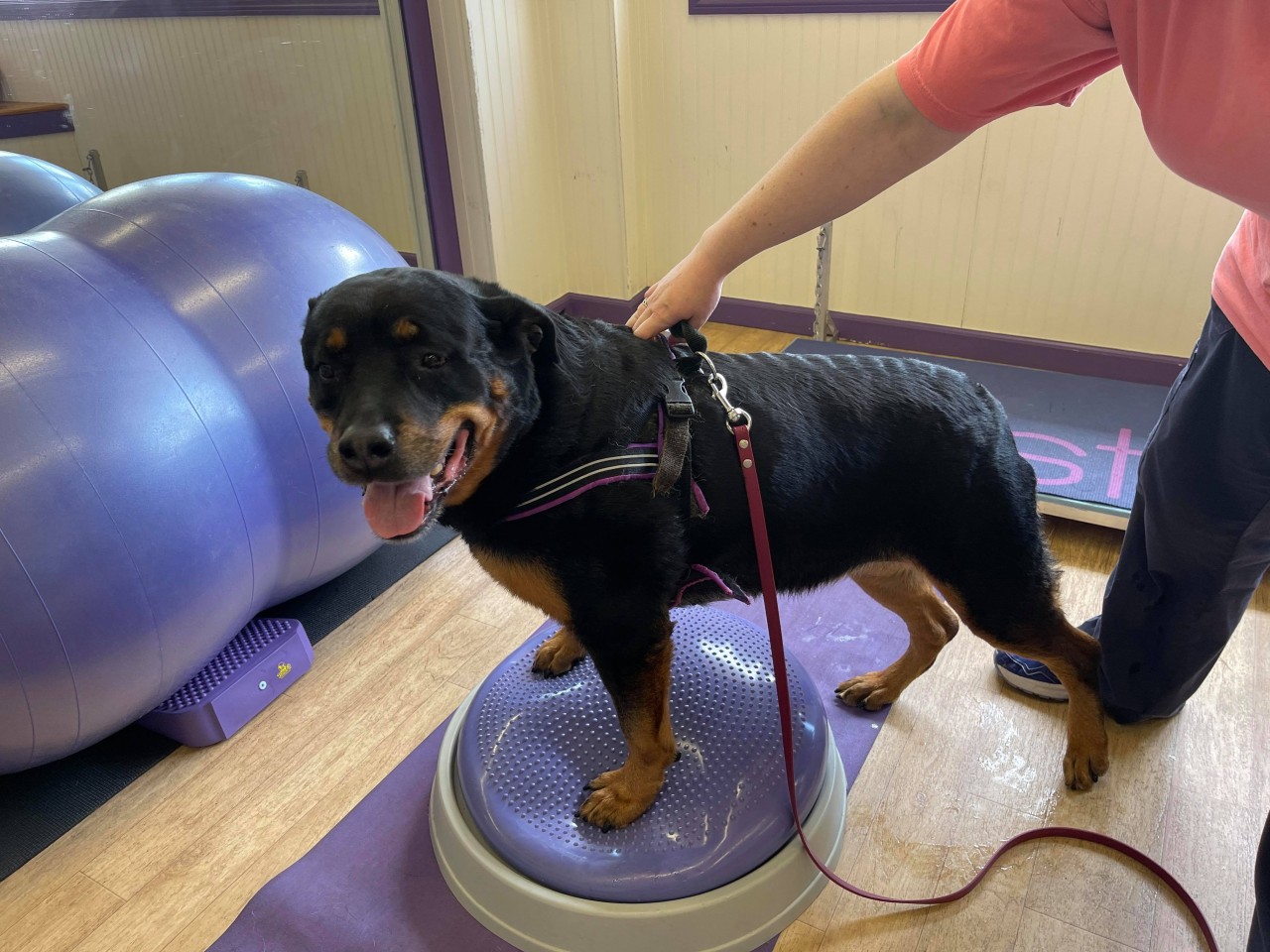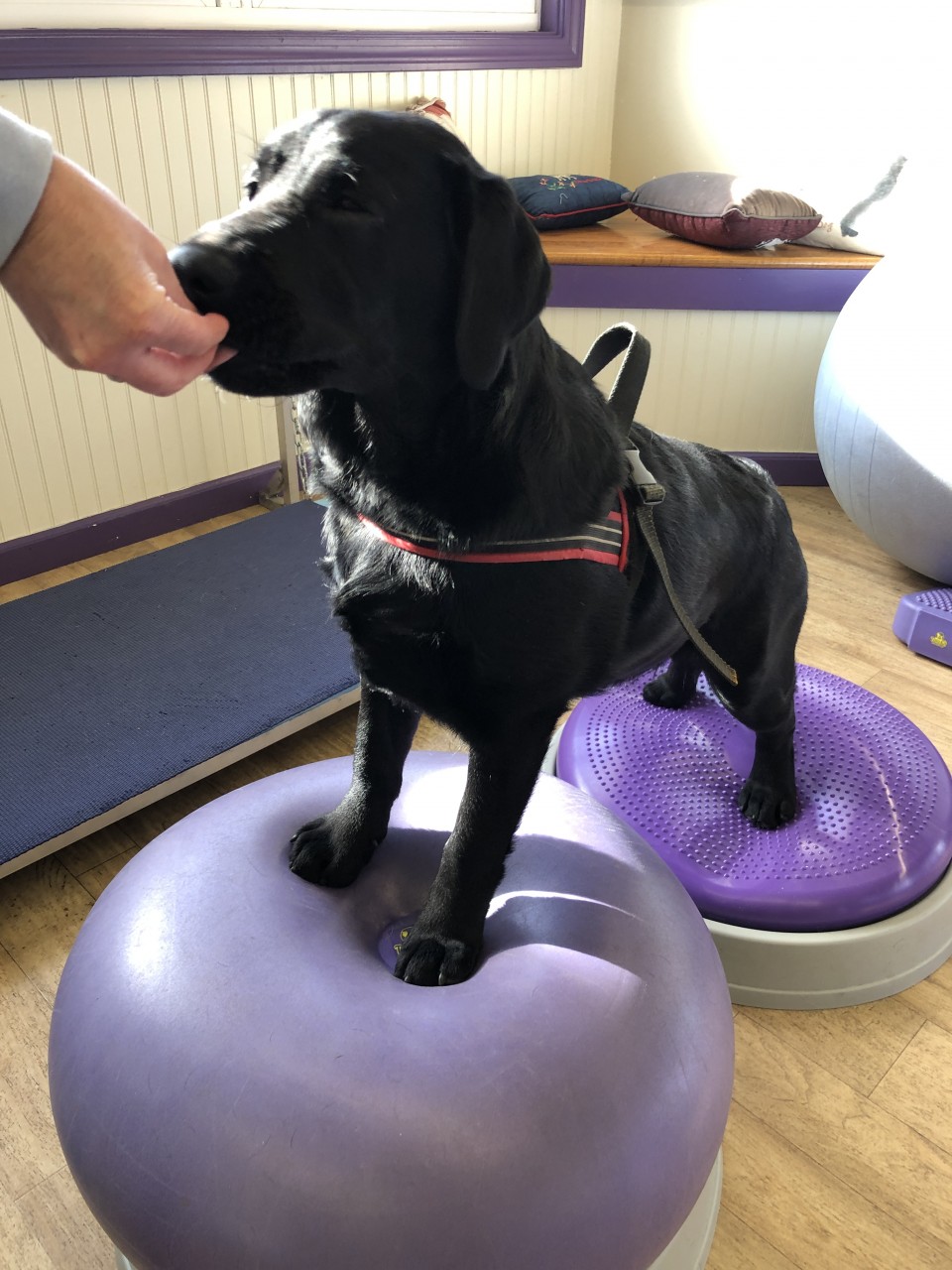Routines provide us with comfort, control, and can reduce stress levels. They help us relax and can reduce anxiety. Think about how it feels for you, to be thrown out of your normal routine. It can be stressful for some of us! Now think about this happening when you are in a new and strange place. That's uncomfortable, or even scary.
It can be the same with our dogs. Routines can help provide comfort, especially in new environments. It's important to note that like everything with our dogs, this is an individual thing - routines can be less important for some dogs, and have more of an impact with other dogs.
Flexibility is the ability of muscles (and muscle groups) to lengthen and move a joint through range of motion. Mobility is the ability of a joint to move through range of motion. Movement is a complex marriage of biology: joints, ligaments, tendons, muscles, neurological input and control, pain, medical conditions and medications, and behaviour. So it's important that we are aware of all the different things that can impact movement.
Here's the thing — without flexibility, and strength, bodies are not good at mobility! To move fluidly to the end of a range of motion for a joint the muscle has to comfortably lengthen to it's full extension, and then needs the strength, power, and control to shorten and create flexion.
Flexibility can be a gamechanger for sports dogs, both in the positive aspect and the negative. A dog that vastly lacks flexibility can have a huge impact on being physically able to perform some movements and skills. A dog with too much flexibility can get sore, and easily injured as the joints lack support.
Think about our sports skills. These are complex both in terms of learning and understanding, but also biomechanically what our dogs need to do with their body.
All dogs at some time need confinement to a crate, or an X-pen for recovery. Rest and a reduction in physical movements are required to enable the body to heal, and recover.
Keeping dogs calm, and occupied over this period is not only vital to their recovery, but their mental health. We don't want sad confined dogs, or conversely dogs confined and going stir crazy.
It's important to note here that you should always consult your dogs healthcare professional if you are unsure if a certain activity is suitable for your dog and it's circumstances.
My dogs were always fine going to the vet's office, until they weren't. Typically we did 'happy puppy' visits, used lots of food to distract them during exams and shots, and let the very friendly staff make a big fuss over them. That worked fine, until it didn't.
At some point in your dog's life he's likely going to need to have stressful and/or painful procedures done. You can usually get by with that the first time; but then the suspicion and concern start. With every visit it becomes more and more of a struggle to get your dog in and get the exam done. You find yourself needing to use more pressure, your dog is more distressed, and the cookies aren't working any longer. Now what?
Here are 5 things you can do TODAY!
Do you know what free-roaming dogs do all day? How do you think your own dog might interact with them? Marco Ojeda and Chrissi Schranz recently offered a free webinar on the subject — and we've shared it here for those who missed it live!
Bum Knees – no matter how you slice it – anyone involved in dogs either directly knows or has owned a dog that has had a 'bum' knee. The bum knee may be due to cranial cruciate injuries or the dreaded 'ACL', patella luxation, or a growth-related issue. Some dogs are prone to knee injuries – they may be straight in the rear, be a small breed, or a large breed with a predisposition for knee problems.
Any time there is a problem with the knee, or any joint, the process of inflammation and pain begins. This will subsequently lead to loss of strength and motion. The loss of strength and motion leads to more inflammation and pain. This cycle will lead to osteoarthritis.
All of us who play sports with our dogs worry about musculoskeletal injuries. Whether your dog is very lame or just showing subtle signs of injury, there are few things that may help with a fast and permanent resolution of the problem.
Don't ignore early signs of a problem. Not all injured dogs show an obvious lameness. There may be a decrease in performance, such as slower times in agility, slower response to cues in obedience, a slight hesitation to start an activity. We all know some dogs will do what they love, or what we asked them to do, even if it hurts. Not too long ago, veterinarians were taught not to treat pain in dogs because the pain will make the dog restrict their own activity. Not many of us believe that any more.
The first time I kept a dog intact it was for medical reasons. She had a health condition that made elective surgery of any type inadvisable until it was resolved.
At the time, the idea of living with an intact dog was both daunting and a bit scary. I mean, how was I going to keep her safe? Avoid unwanted puppies? Prevent health problems?
Fortunately, what seemed like a curse at the time ended up being a blessing in a Malinois disguise.
Once a year, I teach a class called Canine Sports Medicine for the Performance Dog Handler. It is not just for performance dog handlers. Anyone who has a dog that is active, that has had an injury, or that will have an injury, will benefit from this class.
Everyone wants to do the best for their dogs. Many of us are willing and able to travel several hours and spend several thousand dollars to treat our dog's injury. The problem is, if we don't know what is wrong, we can't fix it. In my experience, the weakest link in treating injuries in dogs is getting the correct diagnosis.
Knees are a fact of life with dogs. Unfortunately, so are bum or dysfunctional knees. No one wants to hear their dog has a bum knee or an injury to their knee. But if you are 'in dogs', you will experience a bum knee at some point. It is just part of the deal!
What is a bum knee? It can be anything from a torn cranial cruciate ligament ('cruciate', ACL, or CCL to some), luxating patellas, or straight knees, to osteoarthritis or arthritis, meniscal injuries, bone deformities, or a soft tissue injury. Of course, there are also the outliers: fractures, lesions, and growth related problems.
And some breeds are more prone to certain knee problems than others. For example, many small breeds have an inclination to luxating patellas. Rottweilers, Labrador retrievers and Golden retrievers are prone to cranial cruciate injuries.
My dog can already trot through cavalettis, so what do I do now?
The cavalettis can be a daunting piece of equipment to buy or make, especially when traditionally it is only used as a trotting exercise. However, cavalettis are actually one of the most versatile pieces of equipment you can use for canine conditioning.
You usually need a veterinarian to tell you what's wrong with your dog.
You may notice signs that something is wrong. Your dog is limping, or not eating, or drinking more water than normal. You may have an idea of what it could be, but you will probably need a veterinarian's exam, and possibly some laboratory tests or radiographs (x-rays), to make a diagnosis.
But how do you tell what's right with your dog?

